Disclosure: This article contains affiliate links. We may earn a commission from purchases at no extra cost to you, which helps our travel content.
The morning light casts long shadows across Pilsen's vibrant murals as I sip my café de olla at a family-owned Mexican coffee shop. Three tables away, a group of art students sketch the street scene while debating the merits of various neighborhood galleries. This is Chicago beyond the glossy downtown attractions—a city of 77 distinct neighborhoods, each with its own cultural heartbeat, culinary traditions, and artistic expression. Having covered sporting events in major cities worldwide for over two decades, I've developed a particular appreciation for how urban communities maintain their identity through food and creative expression. Chicago exemplifies this beautifully. While tourists queue for deep-dish pizza and selfies at The Bean, the soul of this remarkable city pulses through neighborhoods where immigrants have transformed ordinary streets into extraordinary cultural showcases. Over the past week, I've navigated these diverse enclaves, from the Polish influences of Avondale to the vibrant Mexican-American culture of Pilsen, discovering how Chicago's neighborhoods offer an authentic alternative to the downtown experience—one delicious meal and street mural at a time.
Pilsen: Where Mexican Heritage Meets Artistic Renaissance
The 18th Street Pink Line station deposits you into the heart of Pilsen, where the air carries the mingled scents of simmering carnitas and fresh paint. This historically Mexican-American neighborhood reminds me of certain corners of San José, Costa Rica, where cultural preservation and artistic innovation coexist in beautiful tension.
My exploration begins at the National Museum of Mexican Art—remarkably free to enter—where the exhibits range from pre-Columbian artifacts to contemporary political pieces. The current exhibition on traditional sporting culture particularly resonates with me, drawing parallels between ancient Mesoamerican ball games and modern athletic rituals.
'The museum is just the beginning,' explains Elena Gonzalez, a local artist I meet while photographing a particularly striking mural on 16th Street. 'Our walls tell our stories.' She's right. Pilsen boasts one of North America's largest collections of street art and murals, many depicting themes of migration, identity, and resistance. The 16th Street murals stretch for nearly a mile, transforming an industrial corridor into an open-air gallery.
For lunch, I avoid the spots where tourists congregate and instead follow Elena's recommendation to Carnitas Uruapan. The simplicity of their menu—essentially just carnitas served various ways—speaks to a dedication to perfection rather than variety. The tender pork, slow-cooked in copper pots according to traditions from Michoacán, dissolves on my tongue. I pair it with their house-made salsas and handmade tortillas while chatting with the owner's son, who explains how his father started the business in 1975.
As evening approaches, the neighborhood transforms again. Small galleries open their doors for impromptu exhibitions, and Thalia Hall—a restored 1892 performance venue—prepares for tonight's concert. Before heading there, I stop at Dusek's Board & Beer, housed in the same historic building, where the craft beer selection rivals any I've found in Wellington's celebrated brewing scene.
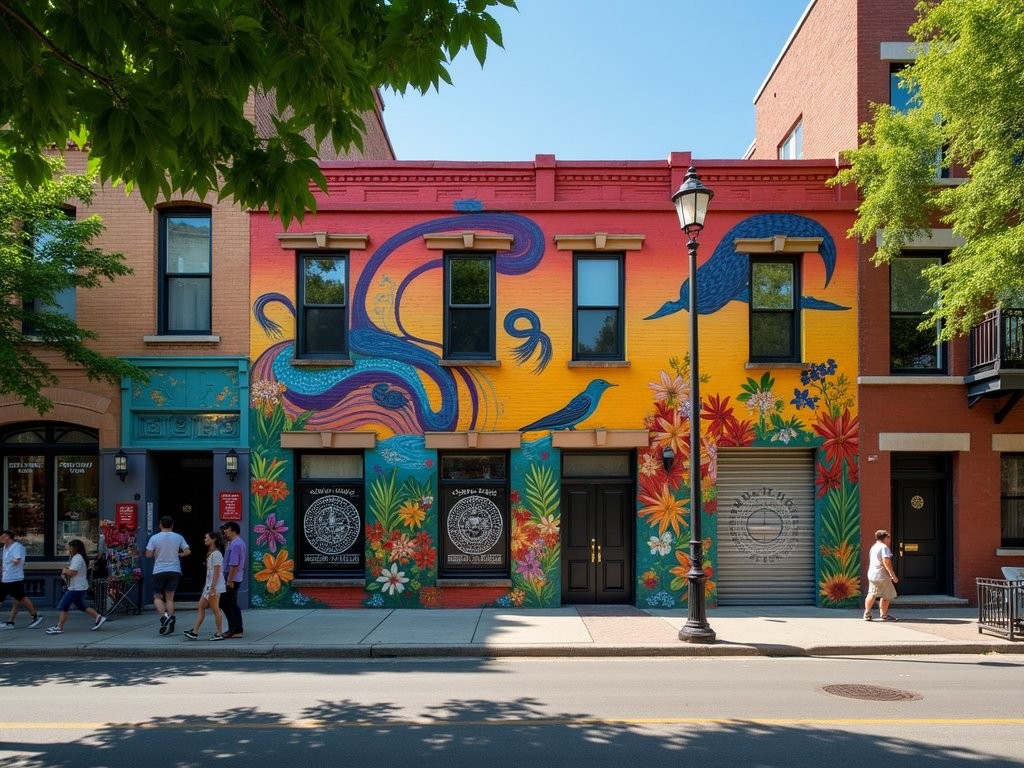
💡 Pro Tips
- Visit the National Museum of Mexican Art on weekdays to avoid weekend crowds
- Download the Pilsen Mural Map app to create your own self-guided street art tour
- Many galleries host free opening receptions on the second Friday of each month
Devon Avenue: A Global Bazaar in Chicago's North
If Pilsen showcases Mexican-American culture, then Devon Avenue offers a fascinating cultural mosaic primarily centered around South Asian and Jewish communities. Walking the stretch between California and Western Avenues feels like traversing multiple international borders without a passport.
The street signs themselves tell the story: this section of Devon is officially designated as Gandhi Marg, Mohammed Ali Jinnah Way, and Golda Meir Boulevard, honoring Indian, Pakistani, and Jewish leaders respectively. This coexistence of cultures that might be in tension elsewhere reminds me of certain neighborhoods in Wellington, where diversity creates unexpected harmonies rather than discord.
I begin my exploration at Patel Brothers, a grocery store that has grown from a small immigrant-owned shop in 1974 to a national chain. The produce section features vegetables I recognize from my father's Kerala cooking—bitter melon, drumsticks, and various greens that rarely appear in mainstream American markets. The spice aisle is a sensory overload, with burlap sacks of whole spices alongside neatly packaged powders. I purchase some cardamom pods and jaggery, planning to attempt my grandmother's chai recipe back at my rental apartment.
For lunch, I bypass the more tourist-friendly restaurants with English-only menus and step into Thattu, a small eatery specializing in Kerala cuisine. When I mention to the owner that my father hails from Kochi, she brings out a special appam not listed on the menu, its fermented rice batter cooked to lacy perfection. We chat about cricket—the universal language that bridges cultural divides in Commonwealth nations—and she shares stories of watching matches at local community centers where hundreds gather for World Cup viewings.
The afternoon sees me wandering through sari shops with fabrics so vibrant they make Chicago's summer flowers look dull by comparison. At Sahil, I observe a mother and daughter selecting wedding attire, the careful negotiation between tradition and modern tastes playing out in their selections.
As evening approaches, I find myself at Sukhadia's Sweets, where the glass cases display geometric patterns of colorful mithai (Indian sweets). I select a small box of kaju katli, the diamond-shaped cashew confection that reminds me of childhood visits to my grandparents. Outside, I notice several groups using the Chicago Explorer Pass to navigate between neighborhoods efficiently—something worth considering if you're planning to explore multiple areas during your visit.
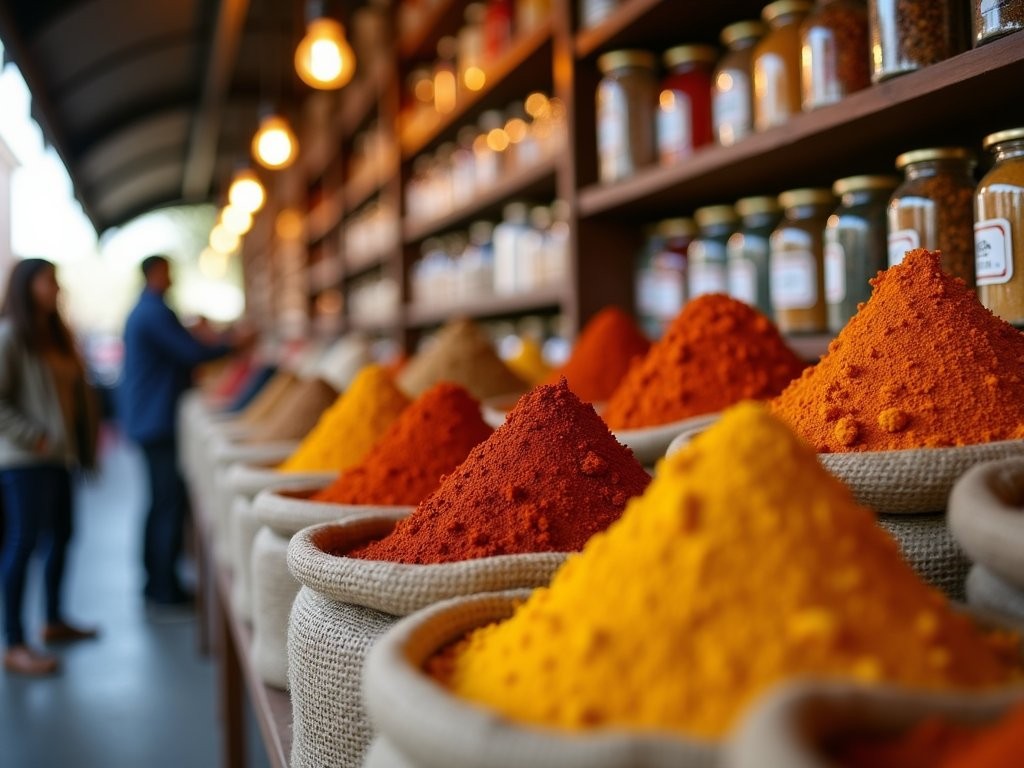
💡 Pro Tips
- Visit Devon Avenue on weekends when the street is most vibrant and shops are fully open
- Many restaurants are cash-only, so come prepared
- Look for specialty items like freshly made paneer (cheese) and handcrafted bangles that make unique souvenirs
Bronzeville: The Cradle of Black Cultural Renaissance
Chicago's Great Migration history comes alive in Bronzeville, once known as the 'Black Metropolis' and comparable to Harlem in its cultural significance. As someone who's documented how sporting traditions reflect broader societal movements, I find Bronzeville's role in shaping American athletics particularly fascinating.
My morning begins at the Bronzeville Visitor Information Center, housed in a former Supreme Life Insurance building—the first Black-owned insurance company in the northern states. The center offers self-guided tour maps that I highly recommend for understanding the neighborhood's historical context. I opt for their Bronze Map, which highlights architectural landmarks and cultural sites.
Walking south on Martin Luther King Jr. Drive, I pass the Victory Monument, honoring Black soldiers of the First World War, before reaching the former Eighth Regiment Armory. Now the Bronzeville Military Academy, this structure housed the legendary 'Fighting Eighth'—an all-Black regiment that served with distinction in multiple conflicts. The building's massive limestone façade speaks to the pride and dignity of a community often denied recognition.
For lunch, I stop at Pearl's Place, where the soul food menu reads like a history lesson in African American culinary traditions. My plate of smothered chicken, black-eyed peas, and cornbread offers flavors developed through generations of creativity and resilience. The walls display black-and-white photographs of Bronzeville in its heyday, when performers like Louis Armstrong and Nat King Cole graced local stages.
'We're not just preserving history here—we're making it,' explains Marcus, my waiter, when I ask about the neighborhood's current renaissance. He points me toward Gallery Guichard, a contemporary art space showcasing African American, Caribbean, and African artists.
The gallery's current exhibition features works responding to climate change impacts on indigenous communities—a theme that resonates with my interest in ecological preservation. I'm particularly struck by an installation using reclaimed materials from demolished South Side buildings, transformed into a statement about displacement and community resilience.
As afternoon turns to evening, I make my way to the Harold Washington Cultural Center for a jazz performance. Before the show, I explore the Monument to the Great Northern Migration—a striking bronze figure facing north with a suitcase, commemorating the six million Black Americans who journeyed from the rural South to northern cities between 1916 and 1970.
While photographing the statue, I notice several visitors using the Chicago CityPASS to access multiple cultural sites across the city. For those planning to visit several major attractions during their stay, this pass offers significant savings and the ability to skip ticket lines at popular venues.
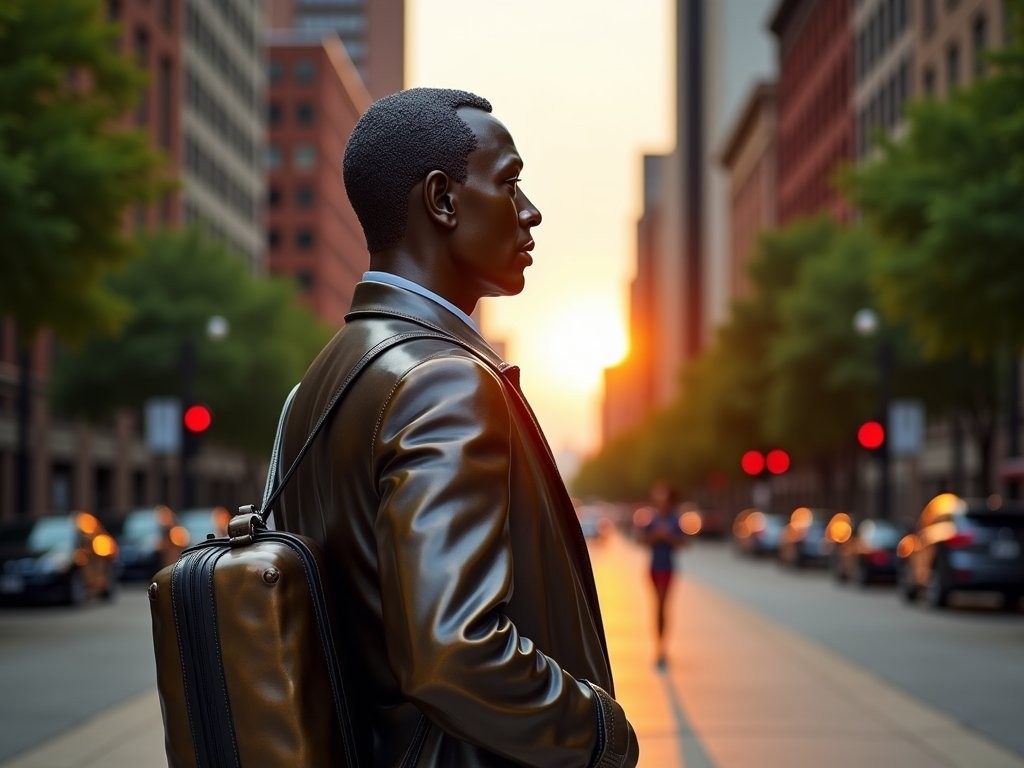
💡 Pro Tips
- The Bronzeville Visitor Information Center offers free walking tour maps and local insights
- Time your visit to coincide with the Bronzeville Farmers Market on Sundays for local crafts and food
- Many historic sites are within walking distance, but areas between attractions may have limited services, so plan your route accordingly
Argyle Street: Chicago's Southeast Asian Enclave
The Red Line deposits me at the Argyle station, where the pagoda-styled entrance immediately signals I've arrived somewhere distinct. This stretch of Uptown Chicago, sometimes called 'Little Vietnam' or 'Little Saigon,' offers one of the most authentic Southeast Asian experiences in the Midwest.
My exploration of Argyle Street reminds me of visits to night markets in Thailand and Vietnam while covering regional sporting events years ago. The same aromatic complexity hangs in the air—fish sauce, star anise, fresh herbs, and charcoal grills creating an olfactory map of Southeast Asia.
I begin at Ba Le Bakery, where the French colonial influence on Vietnamese cuisine is evident in their perfectly crafted baguettes. Their bánh mì sandwich—a harmonious blend of crisp bread, pickled vegetables, fragrant cilantro, and savory proteins—makes for an ideal walking breakfast. I select the classic đặc biệt (special combination) version, filled with Vietnamese cold cuts and pâté.
Wandering east, I pass grocery stores with durian fruit and fresh rambutan displayed alongside herbs I rarely see elsewhere in Chicago. At Tai Nam Market, I observe elderly women carefully selecting the freshest greens and comparing prices of various fish sauce brands with the seriousness of wine connoisseurs.
'Each family has their preferred fish sauce,' explains Lan, a local resident who notices my interest in the extensive selection. 'It's like how Americans might be loyal to certain ketchup brands, but much more important.'
For lunch, I follow Lan's recommendation to Tank Noodle, where the phở arrives in steaming bowls large enough to require both hands for safe transport. The clear broth, simmered for hours with beef bones and aromatic spices, carries complex notes that remind me why this dish has conquered global palates. I doctor mine with bean sprouts, Thai basil, and a squeeze of lime, customizing as locals do.
Between meals, I explore the community spaces that make Argyle Street more than just a food destination. At the Vietnamese Association of Illinois, a small exhibition documents the refugee experience following the Vietnam War, while the Haibayô Center offers classes in traditional dance and music.
As evening approaches, the street transforms again. Strings of lanterns illuminate restaurant patios, and the demographic shifts to include more young professionals and culinary tourists. I settle at Sun Wah BBQ, just off Argyle, where the Hong Kong-style roast duck is carved tableside with ceremonial precision.
While waiting for my duck, I notice several families consulting the Chicago food guide for neighborhood recommendations. This reminded me that while guidebooks often direct tourists to downtown attractions, the better editions highlight these authentic neighborhood experiences that reveal Chicago's true cultural diversity.
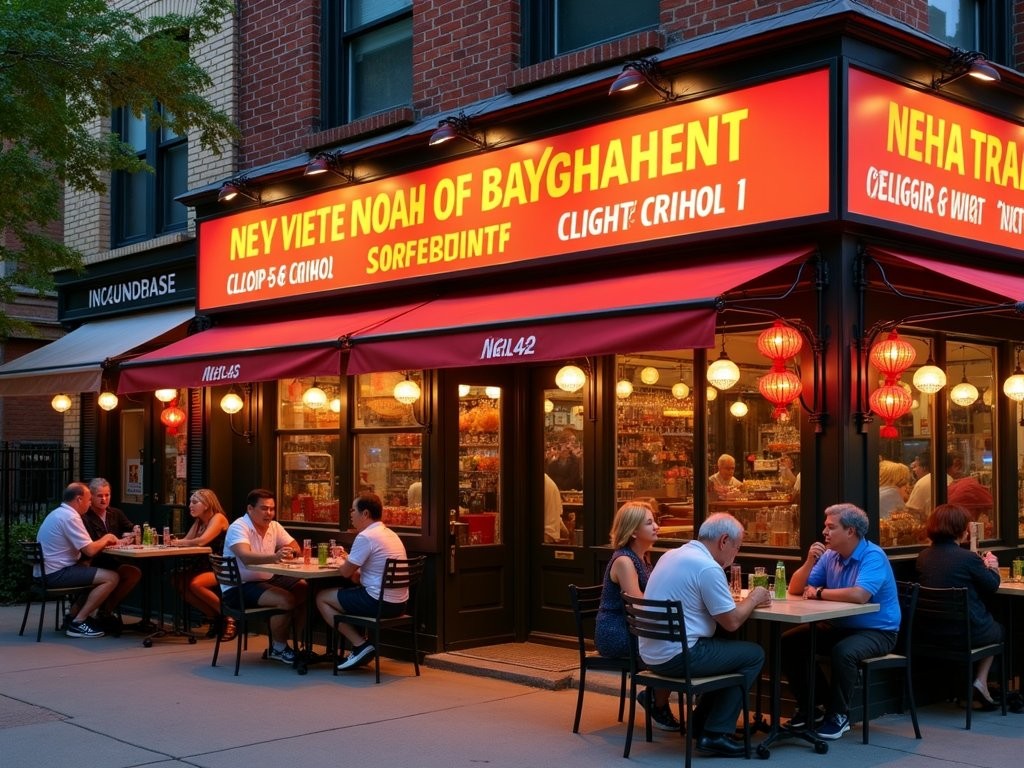
💡 Pro Tips
- Visit Argyle Street on weekday mornings to see locals shopping for the freshest ingredients
- Many restaurants are cash-only or offer discounts for cash payments
- Look for the red-and-yellow Vietnamese flag in restaurant windows—locals often consider this a mark of authenticity
Bridgeport: Working-Class Roots and Creative Reinvention
Bridgeport defies easy categorization. Historically known as a working-class Irish neighborhood and the political base of the Daley family dynasty, today's Bridgeport represents Chicago's evolving identity—a blend of traditional ethnic enclaves and creative newcomers drawn by affordable studio spaces and authentic community feel.
I start my morning at Bridgeport Coffee, housed in a former corner store dating to 1904. The exposed brick walls and vintage fixtures honor the building's history, while the carefully sourced single-origin beans reflect modern artisanal values. Sipping my pour-over beside longtime residents reading newspapers and young artists sketching in notebooks, I appreciate how this space bridges different Chicago eras.
'Bridgeport was never just one thing,' explains Maria, the barista who recommends their house-roasted Mexican beans when I mention my interest in cultural fusion. 'Irish, Italian, Lithuanian, Polish, Mexican, Chinese—we've had waves of immigration for over a century. Now we're getting artists and young families who appreciate that diversity.'
This multiculturalism is evident as I walk north on Morgan Street, passing Chinese bakeries, Mexican taquerias, and Italian delis within blocks of each other. At Gio's Café & Deli, I watch as construction workers and art students alike queue for massive Italian subs and homemade cannoli.
The neighborhood's industrial past provides perfect spaces for its artistic present. The Zhou B Art Center, housed in a converted warehouse, showcases contemporary Chinese artists alongside international exhibitions. During my visit, a gallery talk focuses on environmental art installations—a theme that connects to my interests in ecological preservation. The center's monthly Third Friday open house events draw crowds from across Chicago to this otherwise residential area.
For lunch, I stop at The Duck Inn, where Chef Kevin Hickey reinterprets the food of his Bridgeport childhood through a contemporary culinary lens. The signature rotisserie duck, served with potato hash and seasonal vegetables, honors both the site's history as a pre-Prohibition era tavern and the neighborhood's evolving tastes.
Bridgeport's sporting heritage remains strong despite the controversial 2021 name change of the White Sox stadium from the neighborhood-referencing 'Comiskey Park' to the corporate 'Guaranteed Rate Field.' Walking past the stadium, I notice how game days transform the area, with multi-generational families making their ritual pilgrimages to see Chicago's South Side team.
As afternoon turns to evening, I explore Palmisano Park—a remarkable example of urban reclamation built on a former quarry and landfill. Now featuring fishing ponds, running paths, and spectacular downtown views, the park demonstrates how industrial history can be honored while creating new community spaces.
For capturing these neighborhood explorations, I've been relying on my mirrorless camera, which offers professional-quality images in a compact body that doesn't mark me immediately as a tourist. Its excellent low-light performance has been particularly valuable for documenting Chicago's vibrant evening street scenes and dimly-lit cultural venues.
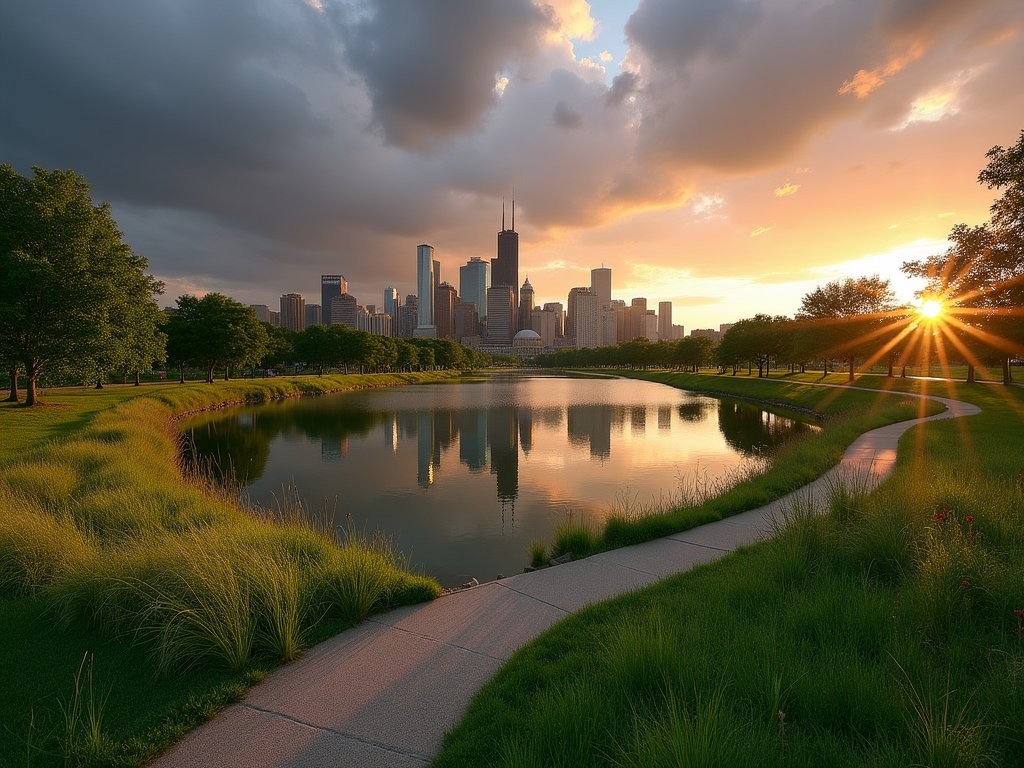
💡 Pro Tips
- Visit Bridgeport on Third Fridays when the Zhou B Art Center hosts open studios and gallery events
- Palmisano Park offers one of the best skyline views in Chicago—perfect for sunset photography
- Maria's Packaged Goods & Community Bar represents the neighborhood's evolution—half traditional liquor store, half craft cocktail bar
Navigating Between Neighborhoods: Transportation Tips
Chicago's grid system makes navigation relatively straightforward, but the city's sprawling nature means strategic transportation planning enhances your neighborhood exploration. During my week of cultural immersion, I developed several approaches to maximize authentic experiences while minimizing transit frustrations.
The Chicago Transit Authority (CTA) forms the backbone of my neighborhood-hopping strategy. The 'L' train—named for its elevated tracks through much of the system—connects many of Chicago's most culturally rich areas. The Brown Line offers scenic views through diverse North Side neighborhoods, while the Pink Line serves Pilsen and the Blue Line reaches Logan Square's flourishing arts district.
For my explorations, I purchased a Ventra Card and loaded a 7-day unlimited pass, which proved more economical than individual fares given my frequent movements between areas. The card works seamlessly across trains and buses, with the latter often providing more intimate neighborhood views than the 'L.'
'Buses are underrated by visitors,' observes Jerome, a retired CTA driver I meet while waiting at a Bronzeville stop. 'The #8 Halsted bus runs north-south through completely different worlds—from Pilsen's Mexican community through Greektown, the West Loop, and up to Boystown and Andersonville. It's like a cultural tour for the price of a fare.'
Jerome's insight proves valuable. On his recommendation, I take the #66 Chicago Avenue bus west from downtown through the Ukrainian Village, where century-old Eastern Orthodox churches stand alongside trendy cafes. The bus routes often reveal transition zones between neighborhoods that would be missed underground on the 'L.'
For certain connections where public transit proves inconvenient, I supplement with ride-sharing services. The Uber and Lyft apps both function well in Chicago, though prices surge predictably during rush hours and bad weather. For sustainability and exercise, I occasionally use Divvy—Chicago's bike-sharing system—which offers day passes and conveniently located docking stations throughout most neighborhoods I visit.
Navigating Chicago efficiently requires some technological assistance. I rely heavily on the Transit app for real-time arrival predictions and my portable power bank to ensure my phone remains charged throughout long days of exploration. This high-capacity power bank can recharge my phone multiple times, which proves essential when using navigation apps, taking photos, and researching neighborhood spots on the go.
For rainy days, Chicago's weather can shift dramatically within hours, so I always carry my packable rain jacket that compresses small enough to fit in my daypack but provides reliable protection during sudden summer downpours. This lightweight layer has saved several neighborhood walks that might otherwise have been abandoned due to unexpected showers.
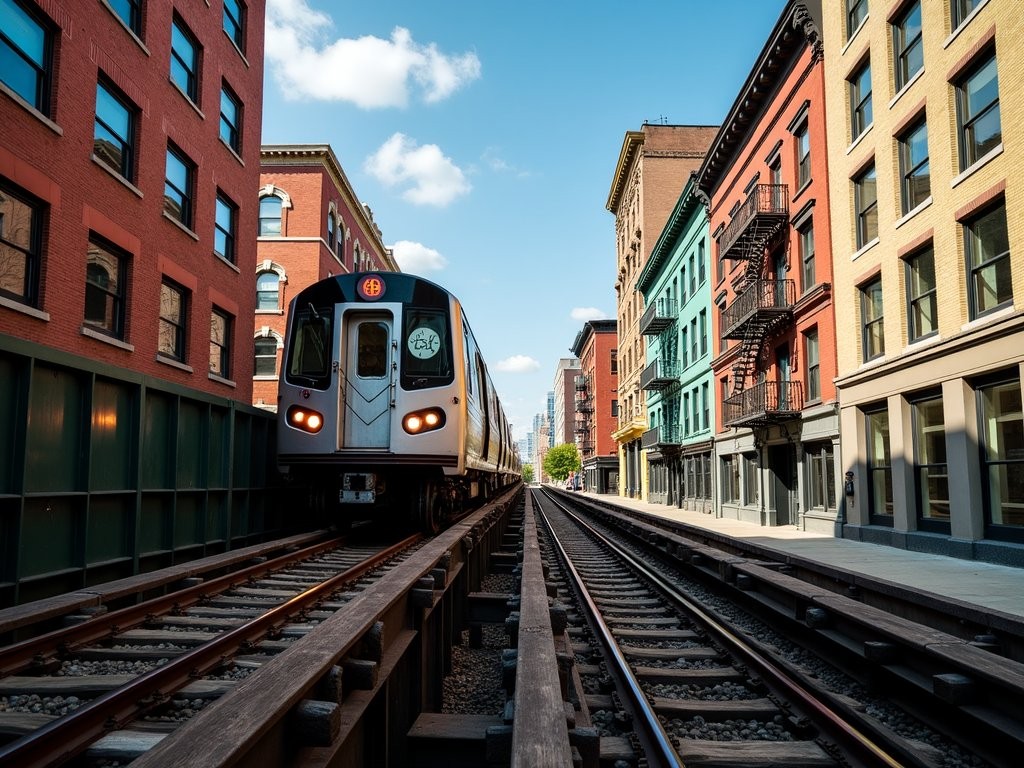
💡 Pro Tips
- Purchase a Ventra Card immediately upon arrival and load a multi-day pass for unlimited rides
- Use the Transit app for real-time bus and train tracking to minimize wait times
- Consider Divvy bikes for short cross-neighborhood trips on pleasant days
Final Thoughts
As my week of neighborhood exploration concludes, I find myself at the Promontory Point in Hyde Park, watching the sunset paint Lake Michigan in shades of amber and rose. Chicago reveals itself differently when experienced through its neighborhoods—more textured, more honest, more alive than the polished downtown attractions suggest. These communities aren't merely places to visit; they're living cultural ecosystems where food, art, and daily rituals preserve heritage while embracing evolution. Whether you're savoring handmade tortillas in Pilsen, contemplating the Great Migration's legacy in Bronzeville, or discovering contemporary Chinese art in Bridgeport, Chicago's neighborhoods offer windows into America's ongoing cultural conversation. The next time someone mentions Chicago, look beyond the magnificent skyline and famous deep-dish pizza. The city's true character lives in these diverse enclaves where residents maintain traditions while crafting new identities—much like the immigrants who built this remarkable American metropolis one neighborhood at a time.
✨ Key Takeaways
- Chicago's 77 distinct neighborhoods offer more authentic cultural experiences than downtown tourist attractions
- Public transportation provides an economical and immersive way to explore diverse communities
- Food serves as both cultural preservation and creative expression across Chicago's ethnic enclaves
📋 Practical Information
Best Time to Visit
Late May through September offers pleasant weather for neighborhood walking tours
Budget Estimate
$125-200 per day including accommodations, food, and transportation
Recommended Duration
5-7 days allows for in-depth neighborhood exploration beyond tourist sites
Difficulty Level
Beginner
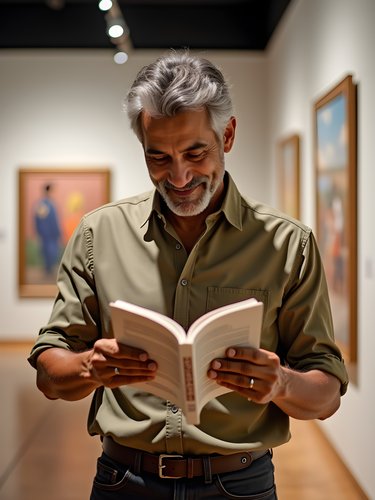

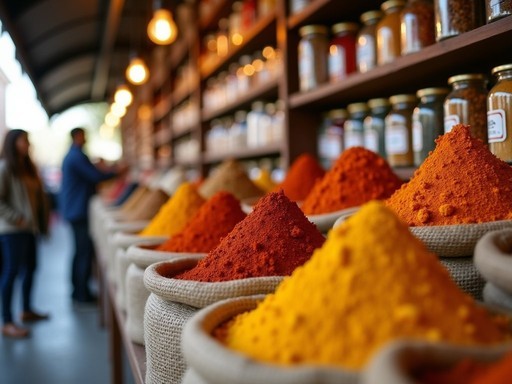
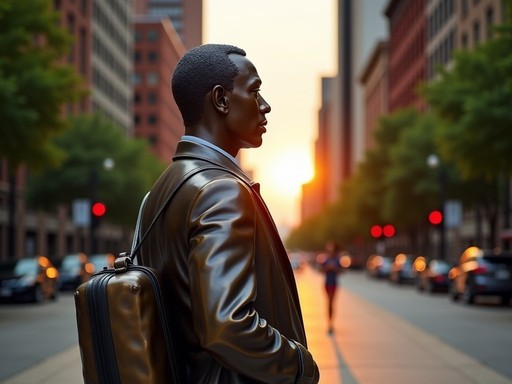
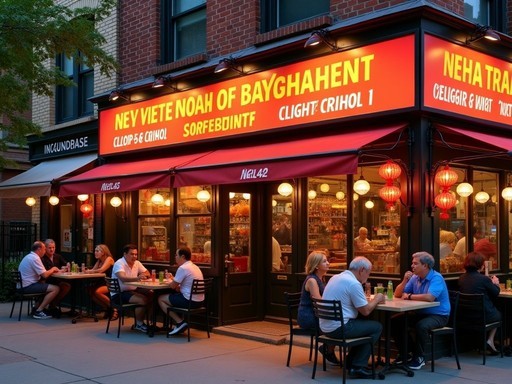
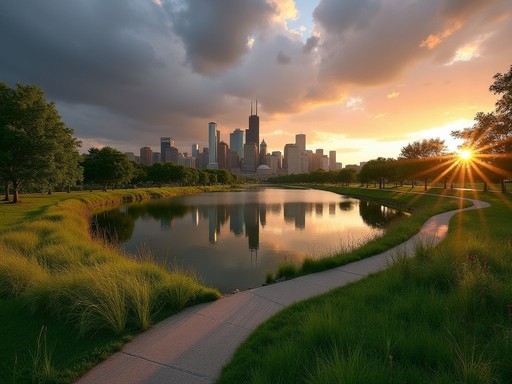
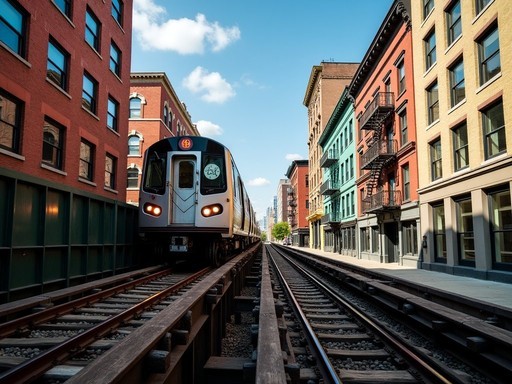


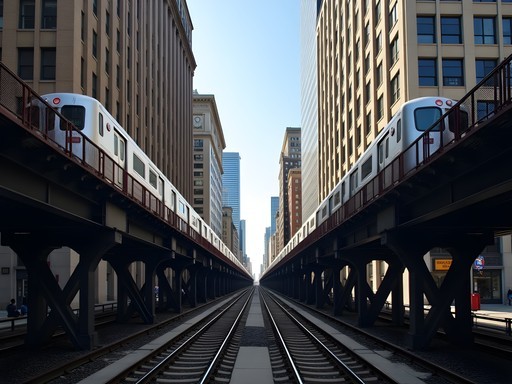
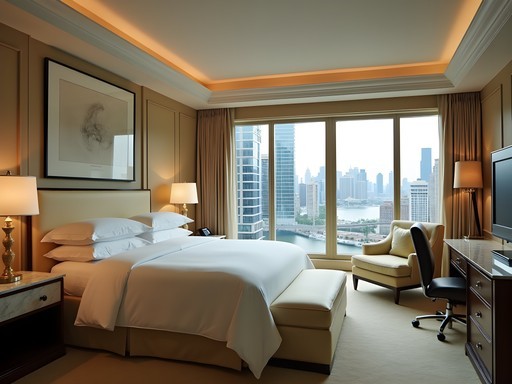






Comments
summermate4728
Any recommendations for where to stay to be central to most of these neighborhoods? Planning a 5-day trip focused on food and art.
starblogger
I stayed in Wicker Park and found it perfect - hip area with its own great food scene, plus easy Blue Line access to downtown and buses to other neighborhoods. Hotel Robey was worth the splurge for the rooftop views!
Sage Dixon
Amit, you've captured exactly what I love about Chicago - it's a city of neighborhoods with such distinct personalities! Your Pilsen section reminded me of stumbling across the National Museum of Mexican Art there last year. It's completely free and houses the most incredible collection. One neighborhood I'd add to your excellent list is Andersonville. The Swedish heritage is still visible (the Swedish American Museum is worth a visit), but now it's got this amazing mix of Middle Eastern bakeries, LGBTQ+ owned businesses, and some of the coziest coffee shops in the city. Lost Larson's cardamom buns are worth the trip alone. For anyone visiting Chicago, I always recommend setting aside at least 2-3 days just for neighborhood exploration beyond the downtown loop. The real Chicago lives in these communities!
happymaster
Any recommendations for where to stay to access these neighborhoods easily? First timer to Chicago here!
Sage Dixon
@happymaster I'd recommend staying in Wicker Park or Logan Square. Both are well-connected by the Blue Line, have their own great food scenes, and put you in a good position to explore. I used my city guide to plan my neighborhood hopping last year and it worked perfectly. If budget allows, The Robey in Wicker Park has amazing views of the city skyline too!
roamguide8350
If you're heading to Bronzeville like the post mentions, don't miss the Bronzeville Blues District on 47th Street. There's a walking tour with these cool sidewalk plaques marking important spots in jazz and blues history. We did it last fall and learned so much about Chicago's role in music history. The Harold Washington Cultural Center sometimes has amazing performances too if you time it right.
sunnyadventurer
Thanks for the tip! Adding it to my list right now!
sunnyadventurer
Just booked my Chicago trip for next month and this couldn't have come at a better time!! Saving all these neighborhood recommendations!!! 🙌🙌🙌
smarttime
Did you use public transport to get between neighborhoods? Or is it better to drive?
oceanace
Not the author but I've done this trip - Chicago's L train and buses work great for most neighborhoods. Saved a ton on parking too.
dreamninja
Agree with @oceanace - we used a 3-day CTA pass and it was perfect. Just download the Transit app to make it easy.
dreamninja
OMG the food on Devon Avenue is INCREDIBLE!! We spent a whole day there last summer just eating our way through different restaurants. The Ghareeb Nawaz spot mentioned in the post has the best butter chicken ever and it's so cheap! Chicago is seriously underrated for food diversity.
Sophia Gomez
Amit, your post brought back so many memories! I was in Chicago for a business conference last year and escaped downtown one evening to explore Pilsen. That neighborhood is magical at sunset - the murals come alive with the golden hour light. I ended up at Carnitas Uruapan on 18th Street and had what might be the best carnitas I've ever tasted. Did you try it? The contrast between Chicago's polished downtown and these vibrant cultural neighborhoods is what makes the city so special.
smarttime
Is Pilsen safe to visit solo? Planning my first Chicago trip.
Sophia Gomez
@smarttime Absolutely! I wandered Pilsen solo during daytime and early evening hours and felt completely comfortable. Just use normal city awareness like anywhere else.
oceanace
Finally a Chicago post that goes beyond deep dish! Pilsen's murals are incredible.
Hunter Thompson
Absolutely brilliant post, Amit! Just got back from Chicago and used this as my guide. Bronzeville was the highlight for me - the history there is incredible! Had an amazing soul food dinner at Pearl's Place that I'm still dreaming about. The bartender at Buddy Guy's Legends told me stories about the blues scene that had me completely captivated. Managed to catch a poetry slam at a little cafe too, totally spontaneous but such a powerful experience. Chicago's neighborhood scene puts so many other US cities to shame - it's the real deal cultural experience that most tourists completely miss!
Amit Sullivan
So glad you enjoyed Bronzeville, Hunter! Pearl's Place is a treasure. Did you make it to the Bronzeville Visitor Information Center? The history exhibits there are fantastic.
Venture X
Premium card with 2X miles, $300 travel credit, Priority Pass